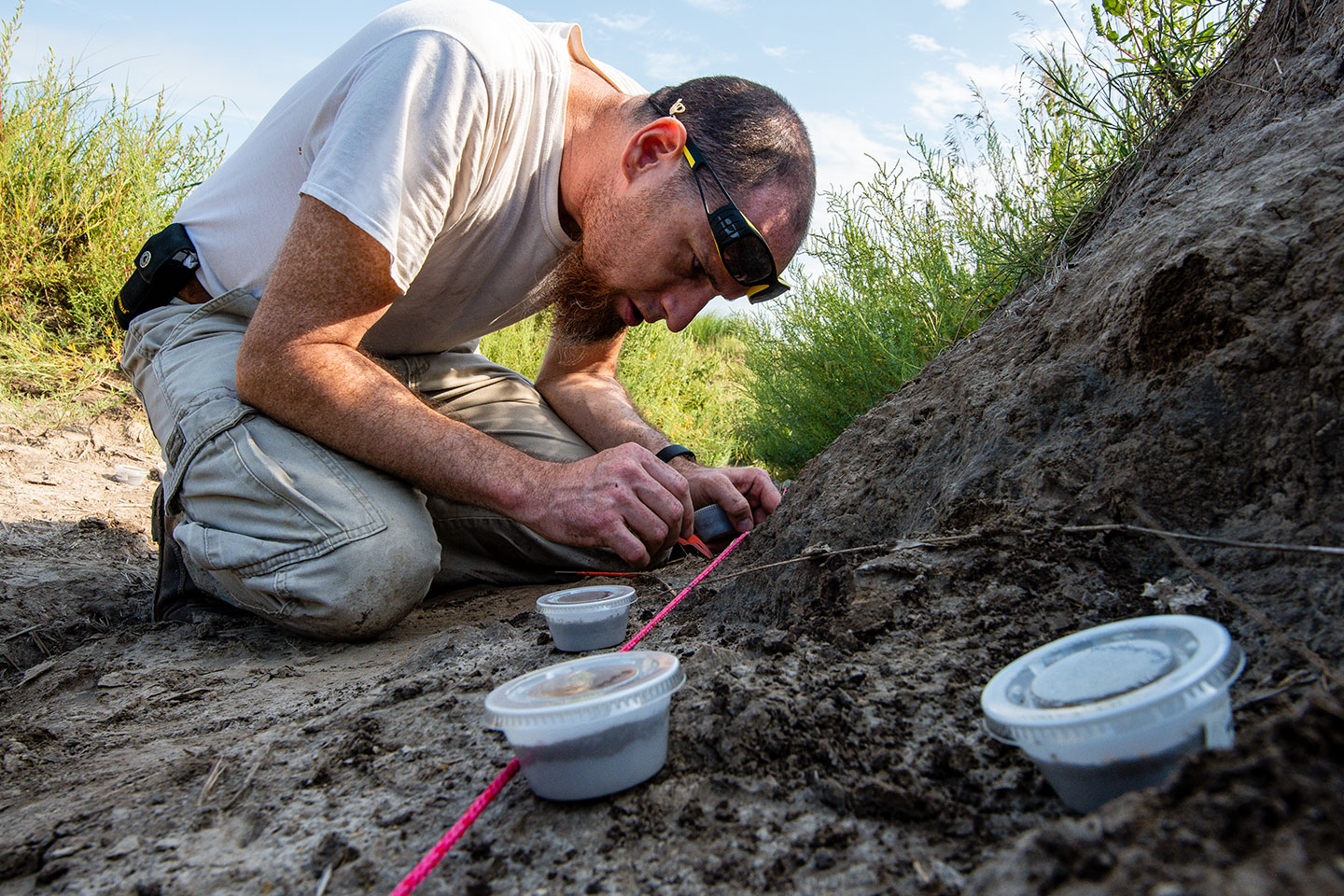Topeka shiner
Status: Endangered

The Topeka Shiner (Notropis topeka) is a small fish reaching lengths between 1.5”-3” with males being slightly larger than females. It is a rather stocky, thick fish. It is yellowy-silver in color and has a pronounced black line which extends all along the side form just behind the head to the start of the dorsal fin. The belly is usually lighter in color (silver-white).
The base of the dorsal fin has a wedge-shaped black spot. Eyes are relatively small and are located in the center of the head. Breeding males have bright orange-red head and fins.
The Topeka Shiner’s life span is three years with nearly 90% dying within the first year.
It was officially listed on the federal Endangered Species list in January 1999.
Range
The Topeka Shiner is a relatively uncommon fish found in the Mississippi River watershed. It is found from Minnesota west to Montana; south to Missouri and Kansas. Range also includes Iowa, Nebraska and South Dakota. Within its range, the Topeka Shiner exists in small, distinct populations that are separate from other populations.
In Nebraska, it is found in Cherry County wetlands and North Loop River streams.
Habitat
The Topeka Shiner is found in very specific habitats consisting of quiet, slow-moving creeks or spring-fed pools. It requires gravel or sand-bottomed substrates with clear water. Pool areas outside the main channel of the creek or stream are preferred.
Diet
They are considered to be omnivores, although little is known about their feeding behaviors. Stomach content research shows both insects and plant material.
Reproduction
Topeka Shiners spawn from late May through July. More northern populations may spawn from June to late August. Although males do not build their own nest, they actively guard their territory. Rather than building a nest, males use nests created by Orange-spotted and Green Sunfish. Neither males nor females are allowed into a male’s territory. Only persistent females which attempt to enter the territory repeatedly are eventually allowed in to spawn.
Both males and females spawn multiple times each spawning season. Typical clutch size average approximately 450 eggs.
Population status
Populations of Topeka Shiners have declined by 70% across its range over the past half century. Population declines are mainly due to three things: habitat loss, increased sedimentation in small streams or creeks and reduced water quality.
Another likely source of population decline is the creation of dams or impoundments on small streams. Often these man-made ponds were stocked by larger predatory fish which prey upon many small shiner and dace species including the Topeka Shiner.
Management and outlook
The Topeka Shiner was officially listed as an Endangered Species on the federal Endangered Species list in January 1999. It is believed the species had seen a 70-80% decline in its population size. With the designation of Endangered under the Endangered Species List, collection or harvesting of the species is not allowed.
Currently, much research is being conducted by universities, agencies and organizations to determine the habitat and resource needs of Topeka Shiners.
Additionally, work is being done to help improve habitat including using vegetative buffers along streams to reduce erosion and sedimentation in streams and ensuring livestock does not have access to streams which increases the potential for erosion.
Conservation help
Landowners within the range of the Topeka Shiner can help with conservation through restoring stream habitat and ensuring quality vegetation is placed along stream banks to prevent soil erosion. Additionally, landowners can help prevent erosion through proper livestock management. All of these practices are important for landowners throughout the watershed as erosion upstream from Topeka Shiner habitat will impact the stream where the shiners are found.
Landowners interested in implementing some of these management practices can contact their local U.S.D.A. Soil and Water Conservation District or Fish & Wildlife Service to discuss federal program funding and implementation opportunities.
Individuals wanting to help species can donate to conservation organizations dedicated to helping this and other Threatened or Endangered Species through research, land management and species conservation.
Finally, taking time to learn about Threatened and Endangered Species as well as sharing that knowledge with others is critical to the development of citizens who care for the future of Threatened and Endangered Species.
References
Nebraska’s At-Risk Wildlife: Conserving Species and Their Habitats. Panella. Nebraska Natural Legacy Project. Pages 108-109.
Peterson Field Guide to Freshwater Fishes. Page and Burr. 1991. Houghton Miffin. Page 160.
Topeka Shiner: Questions and Answers. U.S. Fish and Wildlife Service, Midwest Region. Accessed online December 27, 2017.
Sellner, J. 2012. “Notropis topeka,” Animal Diversity Web. Accessed online December 27, 2017 at
http://animaldiversity.org/accounts/Notropis_topeka/
Topeka Shiner. U.S. Fish and Wildlife Service, Midwest Region. Accessed online December 27, 2017.




